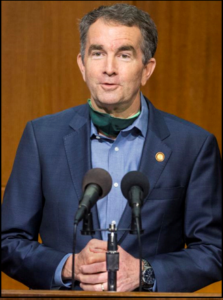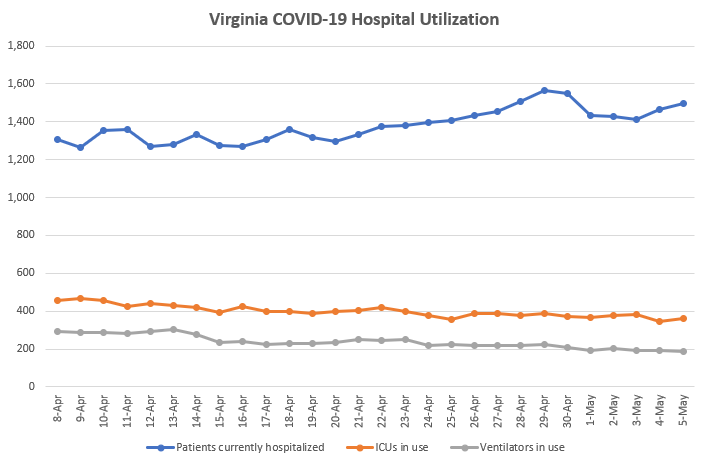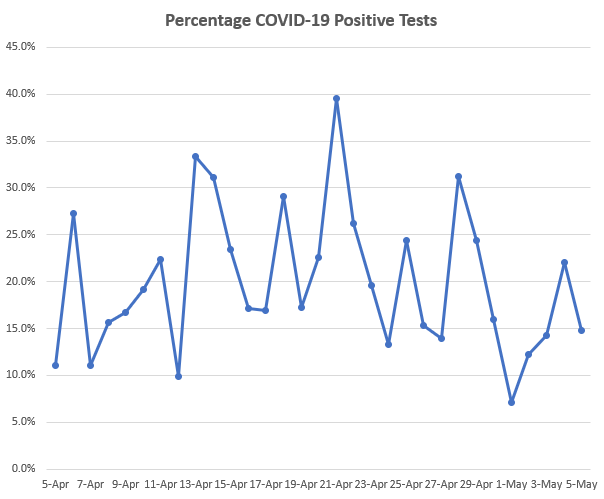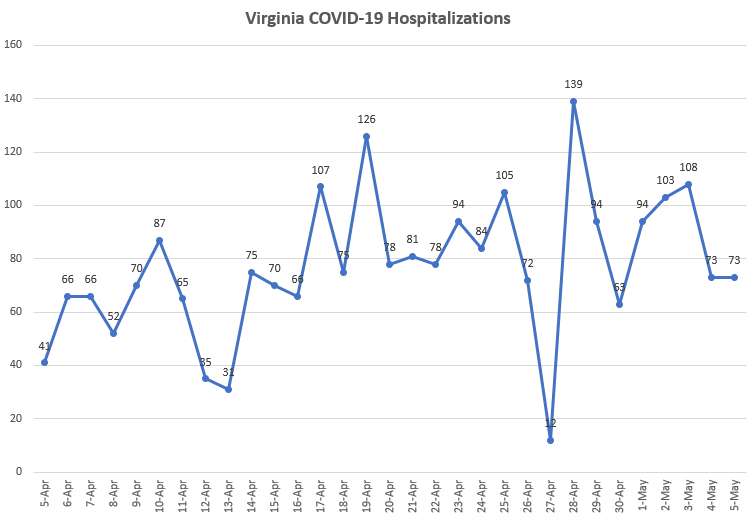If current trends hold, Governor Ralph Northam said in a press conference yesterday, he will allow significant relaxation of emergency COVID-19 shutdown measures by May 14. Social distancing and telework will be encouraged but not mandated.
Phase 1 in the step-by-step migration back to normal will continue to ban social gatherings of more than 10 people but will ease some limits on business and faith communities and will transition the “stay at home” directive to a ‘safer at home” guideline. People still will be urged to wear face coverings in public.
Once-shuttered businesses will be allowed to reopen with industry-specific restrictions. “Here’s the bottom line,” Northam said. “You’ll be able to get your hair cut, but you’ll need an appointment. And you’ll see new safety measures in the salon. It means you can go out to eat again. But restaurants will use less of their seating, so to spread people out. Employees will wear face coverings.”
It is heartening to see that the Governor is shifting to a new balance between protecting the public safety and preventing economic collapse. These measures, combined with he previous edict permitting hospitals to resume elective surgery, should diminish the crushing impact of the COVID-19 epidemic on Virginia’s economy.
What Northam’s remarks lacked was a rationale for the policy reversal. The one favorable trend cited by the Governor — a decline in the percentage of positive tests — is, as I have repeatedly explained, the most demonstrably worthless set of data available. He might has well queried a Magic 8 ball.
Last week the Governor touted his data-driven approach to handling the epidemic. His “Forward Virginia” blueprint outlined four metrics for moving to Phase One of easing public health restrictions:
- Moving downward: percentage of positive tests over 14 days
- Moving downward: hospitalizations over 14 days
- Enough hospital beds and intensive care capacity
- Increasing & sustainable supply of personal protective equipment
Virginia clearly meets the third and fourth of those criteria, which justified the Governor’s earlier decision to roll back the ban on elective surgery. Here is the latest data, updated today, on hospital utilization:
The number of COVID-19 patients being treated in hospitals remains near its all-time high, but the utilization of ICUs and ventilators has been trending steadily downward. The number of “available” beds hit a low of 4,726 yesterday, although hospitals still have a comfortably wide safety margin. These numbers meet the Blueprint’s criteria.
Likewise, PPE shortages have largely evaporated. The Virginia Hospital & Healthcare Association reported zero hospitals anticipating difficulty in replenishing its PPE supplies or other supplies within the next 72 hours. Moreover, the Governor’s Office reported three days ago that the state expects to receive delivery of three Battelle Critical Care Decontamination System (CCDS) units that can collectively sterilize 240,000 units of PPE per day for reuse. The systems will be operational in Blacksburg, Newport News and Chesterfield County later this week. PPE shortages will become a thing of the past.
(The Battelle technology is very cool, by the way. According to the Governor’s press release, “The Battelle CCDS™ uses a concentrated hydrogen peroxide vapor to decontaminate N95 masks, which can sustain up to 20 decontamination cycles without degrading filtration performance. “)
But the first two Blueprint criteria are problematic. This graph shows the daily percentages of positive COVID-19 tests reported to VDH over the past month:
Yes, it is true that the percentage of positive tests each day has trended down over the past two weeks or so. But for purposes of tracking the spread of the virus that is a meaningless number. For starters, the number of daily tests has been running around 5,000 to 6,000, or about half the number Northam said last week would be the minimum required. Even more nettlesome is the fact that the improving percentage of positive tests reflects the flood of results reported by private labs, which have a far lower test-positive rate than the tests conducted by the state lab and hospitals. Comparing test percentages today versus a month ago when only 1,000 to 2,000 tests were being conducted daily, with few private lab results in the mix, is comparing apples and oranges.
Finally, the Blueprint calls for a two-week decline in daily hospitalizations. This metric is far superior to the “test positive” number. While it may not tell us how prevalent COVID-19 is in the general population, it does tell us the number who are sick enough to be admitted to the hospital.
It is pretty clear from eyeballing the trend line over the past two weeks that the spread of the COVID-19 has leveled off — a cause for optimism. But, seriously, can anyone make the case (other than by cherry picking the start and end dates of the comparison) that the number is declining?
Bacon’s bottom line: Frankly, it looks like Governor Northam reached a political decision over the weekend to relax the emergency restrictions despite the fact that the data fail to support two key criteria he had enumerated a few days before. As it happens, I think he reached the correct political decision. I think he should start rolling back emergency measures. But let’s be honest, the move to reopening was political, not data-driven.






